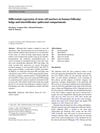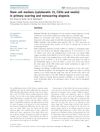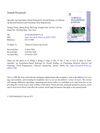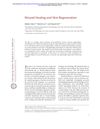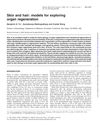Transplantation of Bone-Marrow-Derived Mesenchymal and Epidermal Stem Cells Contribute to Wound Healing with Different Regenerative Features
April 2013
in “
Cell and Tissue Research
”
bone-marrow-derived mesenchymal stem cells BMSCs epidermal stem cells SSCs wound healing re-epithelization dermal collagen synthesis tensile strength recovery blood vessel formation hair follicle formation gelatin-ß-tricalcium phosphate sponge scaffold mesenchymal stem cells collagen blood vessels hair follicles scaffold
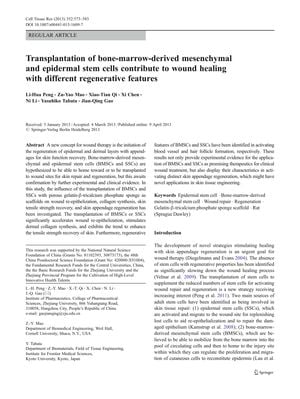
TLDR Bone-marrow and epidermal stem cells help heal wounds differently, with bone-marrow cells aiding in blood vessel formation and epidermal cells in hair growth.
The study from 2013 focused on the wound healing effects of bone-marrow-derived mesenchymal stem cells (BMSCs) and epidermal stem cells (SSCs) in a rat model, with 25 rats per group. Both types of stem cells were applied to wounds using a gelatin-ß-tricalcium phosphate sponge scaffold. The results indicated that both BMSCs and SSCs significantly improved wound re-epithelization, increased dermal collagen synthesis, and showed a trend towards better tensile strength recovery of the skin. Notably, BMSCs were particularly effective in promoting blood vessel formation, while SSCs were more adept at inducing hair follicle formation. These findings suggest that BMSCs and SSCs have distinct regenerative properties and could be beneficial for clinical wound treatment and skin tissue engineering. However, the study also highlighted the need for further research before these therapies can be applied clinically, due to differences between species and the complexities involved in using different types of stem cells together.
